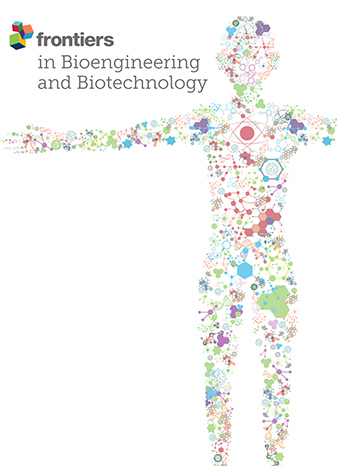Methane biohydroxylation into methanol by Methylosinus trichosporium OB3b: possible limitations and formate use during reaction
IF 4.3
3区 工程技术
Q1 BIOTECHNOLOGY & APPLIED MICROBIOLOGY
引用次数: 0
Abstract
Methane (CHMethylosinus trichosporium OB3b 将甲烷生物羟化成甲醇:可能的局限性和反应过程中甲酸的使用
通过甲烷营养细菌将甲烷(CH4)羟基化为甲醇(MeOH)是生产甲醇的一种有吸引力且可持续的方法。据报道,模式菌株 Methylosinus trichosporium OB3b 是一种高效的羟化生物催化剂。以往的研究表明,无论生物反应器的设计或运行模式如何,MeOH 的浓度都会在几小时后达到一个阈值,但对这一现象背后的原因却没有任何研究。本研究需要监测 CH4 羟基化过程中的甲醇和甲酸盐浓度,在此过程中既没有发现气体底物,也没有发现营养物质短缺。在测定的反应条件下,细菌出现了应激反应,但甲醇不是造成这种现象的原因。必须添加甲酸盐才能开始产生甲醇。用 13C 甲酸盐进行的核磁共振分析表明,甲酸盐有助于 NADH 的再生;甲酸盐在反应过程中消耗殆尽,但甲酸盐数量的增加无法阻止 MeOH 生成的停止。甲酸盐的质量平衡表明,甲酸盐转化为甲醇的产率约为 50%,这表明这是一种细胞调节现象。因此,本研究提出了可能的生理原因,需要进一步研究。最后,据我们所知,本研究表明,该反应可在原生细菌培养物(即添加了甲醇脱氢酶抑制剂的培养基)中实现,避免了离心步骤,同时限制了操作时间和耗水量。
本文章由计算机程序翻译,如有差异,请以英文原文为准。
求助全文
约1分钟内获得全文
求助全文
来源期刊

Frontiers in Bioengineering and Biotechnology
Chemical Engineering-Bioengineering
CiteScore
8.30
自引率
5.30%
发文量
2270
审稿时长
12 weeks
期刊介绍:
The translation of new discoveries in medicine to clinical routine has never been easy. During the second half of the last century, thanks to the progress in chemistry, biochemistry and pharmacology, we have seen the development and the application of a large number of drugs and devices aimed at the treatment of symptoms, blocking unwanted pathways and, in the case of infectious diseases, fighting the micro-organisms responsible. However, we are facing, today, a dramatic change in the therapeutic approach to pathologies and diseases. Indeed, the challenge of the present and the next decade is to fully restore the physiological status of the diseased organism and to completely regenerate tissue and organs when they are so seriously affected that treatments cannot be limited to the repression of symptoms or to the repair of damage. This is being made possible thanks to the major developments made in basic cell and molecular biology, including stem cell science, growth factor delivery, gene isolation and transfection, the advances in bioengineering and nanotechnology, including development of new biomaterials, biofabrication technologies and use of bioreactors, and the big improvements in diagnostic tools and imaging of cells, tissues and organs.
In today`s world, an enhancement of communication between multidisciplinary experts, together with the promotion of joint projects and close collaborations among scientists, engineers, industry people, regulatory agencies and physicians are absolute requirements for the success of any attempt to develop and clinically apply a new biological therapy or an innovative device involving the collective use of biomaterials, cells and/or bioactive molecules. “Frontiers in Bioengineering and Biotechnology” aspires to be a forum for all people involved in the process by bridging the gap too often existing between a discovery in the basic sciences and its clinical application.
 求助内容:
求助内容: 应助结果提醒方式:
应助结果提醒方式:


